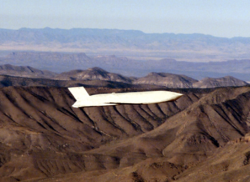Strong Girl (missile)
 JAV 93 Strong Girl during testing at the Salonis Testing Range 1689 AN. | |
| Type |
|
|---|---|
| Place of origin |
|
| Designed | |
| Manufacturer | Javelin Industries |
| In service | 1692 AN - present |
| Wars | |
| Mass | 1,021 kg (2,251 lb) |
| Length | 4.27 m (14.0 ft) |
| Warhead | 450 kg (1,000 lb) penetrator |
| Detonation mechanism | Impact or proximity |
| Engine | 1x turbojet, 3.0 kN |
| Wingspan | 2.4 m (7 ft 10 in) |
| Propellant | Solid propellant |
| Operational range |
|
| Max speed | Subsonic |
| Guidance system |
|
| Launch platform |
|
Although a promising design, the entry of the "Strong Girl" cruise missile into widespread service was considerably delayed by the design team building the type to be delivered from launch platforms that utilised operating systems that were proprietary to Javelin Industries. As most of the aircraft that were intended to carry the missile were mostly prototypes, not yet entered into serial production as of the late 1690's, this presented some difficulties. Four missiles of the type had been launched against Iteran targets during Operation Paramount (1698 AN) in four separate strikes. However, on each occasion, these had been carried on aircraft operated by Javelin Industries; one, a T-5/A-5 Tejón de Miel, carried and released the missile, while a second modified civilian aircraft housed the avionics and mission crew who monitored the missile via a data link, making course corrections based upon feedback from its inertial navigation system, on its way to target. During 1699 AN a pair of Constancian F-9 Ashavan II were modified extensively to carry the cruise missile for strikes against high value targets in the Zeedic capital of Rusjar.